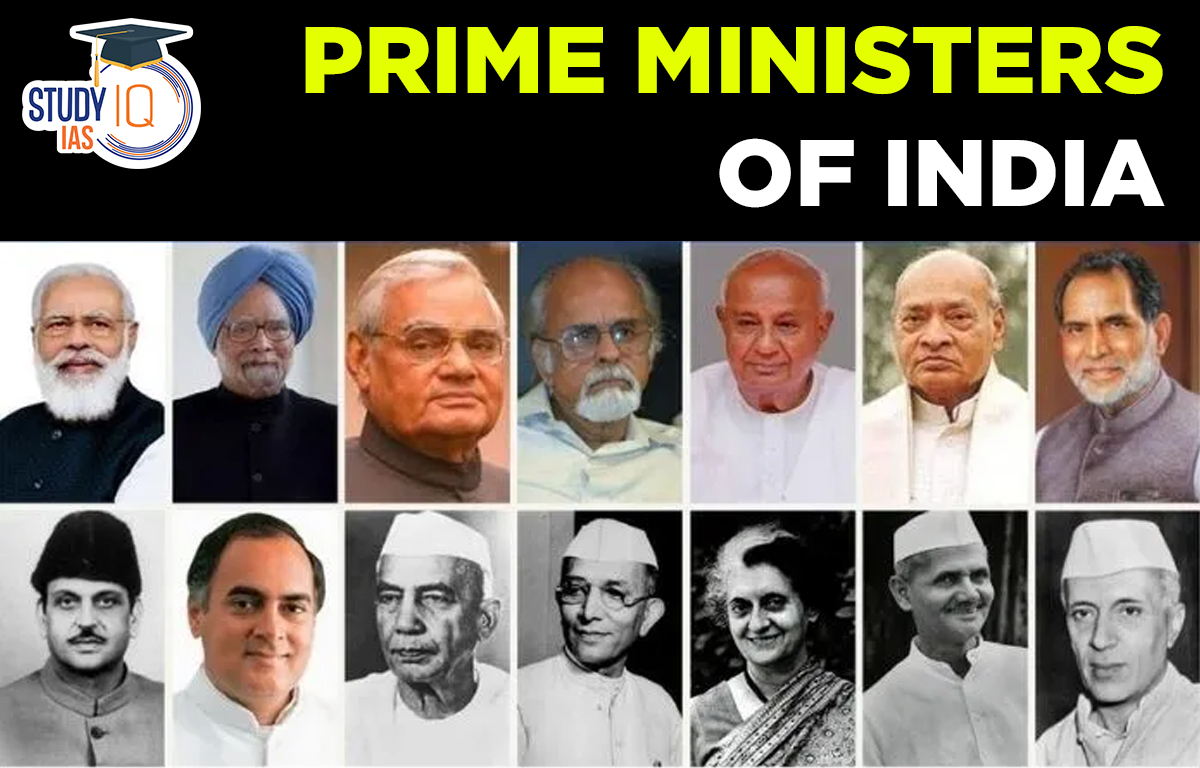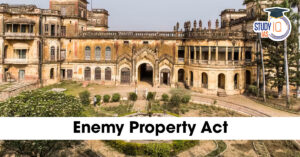Table of Contents
List of Prime Ministers of India 1947 to 2025: As the world’s largest democracy, India has a rich and complex political history since its independence in 1947. A key part of this journey has been the Prime Minister, who has served as head of the government, defining both Domestic and Foreign policy. The article provides a comprehensive list of Prime Ministers of India since 1947, including tenure dates, political party affiliations, and key achievements during their time in office. Learn who is the current Prime Minister of India in 2025.
Who is the Current Prime Minister Of India?
As of June 2025, the current Prime Minister of India is Shri Narendra Modi. He was sworn in for his third consecutive term on June 9, 2024, following the general elections held earlier that year.
In the 2024 Indian general election, the Bharatiya Janata Party (BJP), led by Narendra Modi, did not secure an outright majority on its own. However, the BJP-led National Democratic Alliance (NDA) collectively won 293 out of 543 seats in the Lok Sabha, enabling Modi to continue as Prime Minister with the support of coalition partners.
Narendra Modi is only the second Indian Prime Minister to achieve three consecutive terms, following Jawaharlal Nehru. His leadership has been marked by significant economic reforms, infrastructure development, and a focus on digital initiatives. In his third term, Modi continues to emphasize India’s role on the global stage, including plans to attend the upcoming BRICS summit in Brazil.
Prime Minister of India
The Prime minister is typically the leader of the party or coalition that holds a majority in the Lok Sabha, the main legislative body of the Republic of India. The PM is the head of the executive branch and the presiding authority under India’s parliamentary system of government.
The president of India appoints the prime minister. Still, they need the backing of most of the Lok Sabha members, elected directly every five years, to hold onto the position. The prime minister may be present in either the Rajya Sabha or the Lok Sabha, the upper house of parliament. The distribution of jobs within the government and the appointment and removal of Union Council of Ministers members are solely within the prime minister’s purview.
First Prime Minister of India |
| The First Prime Minister of India was Pandit Jawaharlal Nehru. On 15 August 1947, Lord Mountbatten picked him. He was a Freedom Fighter in India’s independence. He also belonged to the Indian National Congress Party. He was a Member of Parliament from Phulpur. He served in office from 15 August 1947 to 15 April 1952 during his first term. |
First Women Prime Minister of India |
| The first woman Prime Minister of India was Indira Gandhi. She served from 1966 to 1977 and then again from 1980 until she was assassinated in 1984. She was the daughter of Jawaharlal Nehru, who was the first Prime Minister of India. Indira Gandhi had a big impact on India’s politics during her time in office. |
Oldest Prime Minister of India |
| Morarji Desai was India’s oldest Prime Minister, serving at 81 from 1977 to 1979. He was born on 29 February 1896, and held various significant positions in government throughout his career, including Chief Minister of Bombay State, Home Minister, Finance Minister, and Deputy Prime Minister before assuming the role of Prime Minister. Desai’s tenure is notable for his peace activism and efforts to improve relations with neighbouring countries like Pakistan and China. |
List of Prime Ministers of India From 1947 to 2024
Here is the updated List of Prime Ministers of India from 1947 to 2024.
| S.No. | Names | Birth-Death | Tenure | Interesting Facts |
| 1 | Jawahar Lal Nehru | (1889–1964) | 15 August 1947 – 27 May 1964; 16 years, 286 days. | Prime Minister of independent India for the first and longest period. First, the in-office death of a prime minister. |
| 2 | Gulzarilal Nanda | (1898–1998) | 27 May 1964 to 9 June 1964; 13 days. | After Nehru’s untimely death, the nation’s first acting prime minister assumed control. |
| 3 | Lal Bahadur Shastri | (1904–1966) | 9 June 1964 to 11 January 1966; 1 year, 216 days. | During the Indo-Pak war in 1965, he was the originator of the phrase “Jai Jawan Jai Kisan.” |
| 4 | Gulzarilal Nanda | (1898-1998) | 11 January 1966, 24 January 1966; 13 days. | Only man to have twice served as acting prime minister of India. |
| 5 | Indira Gandhi | (1917–1984) | 24 January 1966 to 24 March 1977; 11 years, 59 days. | The Indian prime minister’s spouse, who took the oath of office |
| 6 | Morarji Desai | (1896–1995) | 24 March 1977 – 28 July 1979; 2 years, 126 days. | First PM in 1977 following the emergency. At 81 years old, India’s oldest prime minister took the oath of office before resigning. His birthday was celebrated once every four years because he was born on February 29. |
| 7 | Charan Singh | (1902–1987) | 28 July 1979 to 14 January 1980; 170 days. | Only PM who has never addressed the legislature |
| 8 | Indira Gandhi | (1917–1984) | 14 Jan.1980 to 31 Oct. 1984; 4 years, 291 days. | Following the disaster in 1977, the first PM returned to power in 1980. Like her father, she also passed away while in office. |
| 9 | Rajiv Gandhi | (1944–1991) | 31 Oct 1984 to 2 Dec 1989; 5 years, 32 days. | At the age of 40, he became India’s youngest prime minister. |
| 10 | V. P. Singh | (1931–2008) | 2 Dec 1989 to 10 Nov 1990; 343 days. | First prime minister to leave following a no-confidence vote |
| 11 | Chandra Shekhar | (1927–2007) | 10 Nov 1990 to 21 June 1991; 223 days. | He has never held a position of minister in any ministry. |
| 12 | P. V. Narasimha Rao | (1921–2004) | 21 June 1991 to 16 May 1996; 4 years, 330 days. | He was from Andhra Pradesh and served as the nation’s first South Indian prime minister. |
| 13 | Atal Bihari Vajpayee | (1924-2018) | 16 May 1996 to 1 June 1996; 16 days. | The shortest tenure of any Indian PM is 16 days as PM. |
| 14 | H. D. Deve Gowda | (born 1933) | 1 June 1996 to 21 April 1997; 324 days. | He succeeded as South India’s second prime minister. He is a Karnataka native. But he didn’t work there for more than a year. |
| 15 | Inder Kumar Gujral | (1919–2012) | 21 April 1997 to 19 March 1998; 332 days. | After Indra Gandhi and Deve Gowda, the third Prime Minister to come from the Upper House. |
| 16 | Atal Bihari Vajpayee | (born 1924-2018) | 19 March 1998 to 22 May 2004; 6 years, 64 days. | First non-Congress Prime Minister of independent India to serve out his full tenure |
| 17 | Manmohan Singh | (born 1932) | 22 May 2004 to 26 May 2014; 10 years, 4 days. | First PM of India from the minority community. |
| 18 | Narendra Modi | (born 1950) | 26 May 2014- (Incumbent) | 3rd time Prime Minister other than Jawaharlal Nehru |
List of Prime Ministers Tenure
| Name | Political Party | Length of term |
| Jawaharlal Nehru | INC | 16 years, 286 days |
| Indira Gandhi | INC/INC(I)/INC(R) | 11 years, 59 days |
| Narendra Modi | BJP | 10 years, 67 days(Incumbent) |
| Manmohan Singh | INC | 10 years, 4 days |
| Atal Bihari Vajpayee | BJP | 6 years, 64 days |
| Rajiv Gandhi | INC(I) | 5 years, 32 days |
| P. V. Narasimha Rao | INC(I) | 4 years, 330 days |
| Morarji Desai | JP | 2 years, 126 days |
| Lal Bahadur Shastri | INC | 1 year, 216 days |
| Vishwanath Pratap Singh | JD | 343 days |
| Inder Kumar Gujral | JD | 332 days |
| H. D. Deve Gowda | JD | 324 days |
| Chandra Shekhar | SJP(R) | 223 days |
| Charan Singh | JP(S) | 170 days |
| Gulzarilal Nanda | INC | 13 days |
Also, Check List of Finance Ministers of India
Constitutional Provisions for Prime Minister
- The Prime Minister will be chosen by the President of India, according to Article 75 of the Indian Constitution.
- The Cabinet Ministers are led by the Prime Minister. The Prime Minister is given primary executive authority over the government, with the President serving as the official head of State.
- The responsibilities of the Prime Minister of India are outlined in Article 78 of the Indian Constitution. While performing his duties, he serves as a liaison between the President and the Cabinet.
- The Indian Prime Minister sets the dates for its meetings and events during the session of Parliament. He also makes the call on when to dissolve or prorogue the House.
- In his capacity as chief spokesman, he announces major government initiatives.
Appointment of Prime Minister of India
- The President must appoint the leader of the majority party in the Lok Sabha as Prime Minister in accordance with the rules of the parliamentary system.
- When no party has a clear majority in the Lok Sabha, the President can appoint the Prime Minister at their discretion, usually choosing the leader of the largest party or coalition
- The first use of this discretion was in 1979, when President Neelam Sanjiva Reddy appointed Charan Singh after the Janta Party government fell.
- If a sitting Prime Minister dies and there’s no clear successor, the President must decide who to appoint, but if the ruling party elects a new leader quickly, that person must be appointed.
- According to the Delhi High Court (1980), a person can be appointed Prime Minister without proving their majority first, and the Supreme Court (1997) ruled that someone not in either House can serve as Prime Minister for six months, during which they must join a House.
Power and Functions of Prime Minister of India
The Prime Minister is also the chairman of the Cabinet, which is the highest decision-making body in the government. The Cabinet consists of ministers who are appointed by the Prime Minister. The Prime Minister is responsible for convening and presiding over Cabinet meetings, and he has the power to decide on the agenda of the Cabinet. The Prime Minister has several powers and functions, including:
Executive Powers
The Prime Minister is responsible for the day-to-day administration of the government. This includes implementing government policies, making appointments to key government positions, and representing India at international forums.
Legislative Powers
The Prime Minister is the leader of the majority party in the Lok Sabha, the lower house of the Indian Parliament. As such, the Prime Minister has a significant influence on the legislative process. The Prime Minister can advise the President to summon or prorogue the Parliament, and he can also recommend the dissolution of the Lok Sabha.
Financial Powers
The Prime Minister is responsible for preparing the annual budget of the government. The budget must be approved by the Parliament, but the Prime Minister has a significant influence on the budget process.
Emergency Powers
In the event of a national emergency, the Prime Minister can exercise special powers under Article 352 of the Constitution of India. These powers include the power to suspend the fundamental rights of citizens and the power to impose the President’s rule in the states.
Governance Mechanism of Prime Minister
Relation with the President:
- The PM communicates decisions of the Council of Ministers (CoM) to the President and provides information on administration and legislation.
- The PM advises the President on appointing key officials like the Attorney General and members of the UPSC.
Relation with the Council of Ministers (CoM):
- The PM recommends individuals for ministerial positions, allocates portfolios, and can ask ministers to resign or advise their dismissal.
- The PM leads CoM meetings and guides ministerial activities.
Relation with Parliament:
- The PM leads the Lok Sabha, advises the President on parliamentary sessions, and can recommend the dissolution of the Lok Sabha.
- The PM announces government policies in Parliament.
Relation with the Cabinet:
- The PM forms the Cabinet, allocates portfolios, and sets meeting agendas.
- The PM can consult others but may act independently when necessary.
Relation with External Affairs:
- The PM directs foreign policy and represents India internationally, which can enhance domestic respect.
Planning Role:
- The PM acts as a crisis manager during emergencies and chairs the National Disaster Management Authority.
Cabinet Committees:
- The PM establishes and heads most Cabinet Committees, including the important Cabinet Committee on Political Affairs, which addresses key national issues.
Eligibility For Prime Minister of India
- He/she must be a citizen of India.
- He/she must be a member of either Rajya Sabha or Lok Sabha
- He or she must be at least 25 years old to serve in the Lok Sabha and must be at least 30 years old to serve in the Rajya Sabha.
Prime Ministers Salary, Oath and Tenure
- He takes the oaths of office and secrecy from the President.
- The prime minister takes an oath of office.
- To have unwavering trust in and loyalty to the Indian Constitution.
- To protect the sovereignty and integrity of India.
- To carry out his responsibilities for his office honestly and faithfully.
- To act honourably toward everyone in conformity with the law and the Constitution, without favoritism, fear, or malice.
- The Prime Minister pledges under his oath of secrecy not to discuss any matter brought to his attention as a Union Minister unless it is necessary for the proper performance of his duties.
- The Prime Minister’s tenure is not fixed, and he serves at the President’s pleasure. The PM cannot, however, be removed by the President so long as he has the support of the majority of lawmakers in the Lok Sabha.
- The Prime Minister must resign if the Lok Sabha loses confidence in him (by a majority), or the President may remove him.
- The Parliament periodically decides the Prime Minister’s salary and benefits. PM receives the same salary and benefits as a member of parliament.
Also, Check Prime Minister’s Salary
Relationship Between Prime Minister and President
The relationship between the Prime Minister and the President is covered by a few sections of the Indian Constitution. The articles are: Article 74, Article 75 and Article 78
| Article | Details |
| Article 74 | Describes the relationship between the president and the council of ministers. The PM serves as the head of the council and provides advice to the president on various matters. |
| Article 75 | Three things are mentioned:
|
| Article 78 | PM informs the President of the decisions reached by the council of members. The president may also refer matters to the council of members for discussion. |
Prime Minister of India Facts
| Important Facts | |
| Longest-serving Prime Minister of India | Jawaharlal Nehru (1947 – 1964) |
| India’s second-longest-serving Prime Minister | Indira Gandhi |
| Two times as acting Prime Minister | Gulzari Lal Nanda |
| The Bharat Ratna was awarded to the first Female Prime Minister | Indira Gandhi |
| First Prime Minister of India who was not a member of the Congress | Morarji Desai |
| The highest civilian honour in Pakistan was given to the Indian Prime Minister | Morarji Desai |
| India’s youngest Prime Minister | Rajiv Gandhi |
| First South Indian Prime Minister | P.V. Narasimha Rao |
| First Prime Minister of India who was a member of the Rajya Sabha | Indira Gandhi |


 Admiralty (Jurisdiction and Settlement o...
Admiralty (Jurisdiction and Settlement o...
 Enemy Property Act in India, Background ...
Enemy Property Act in India, Background ...
 Phone-tapping in India, Legal Framework ...
Phone-tapping in India, Legal Framework ...





















